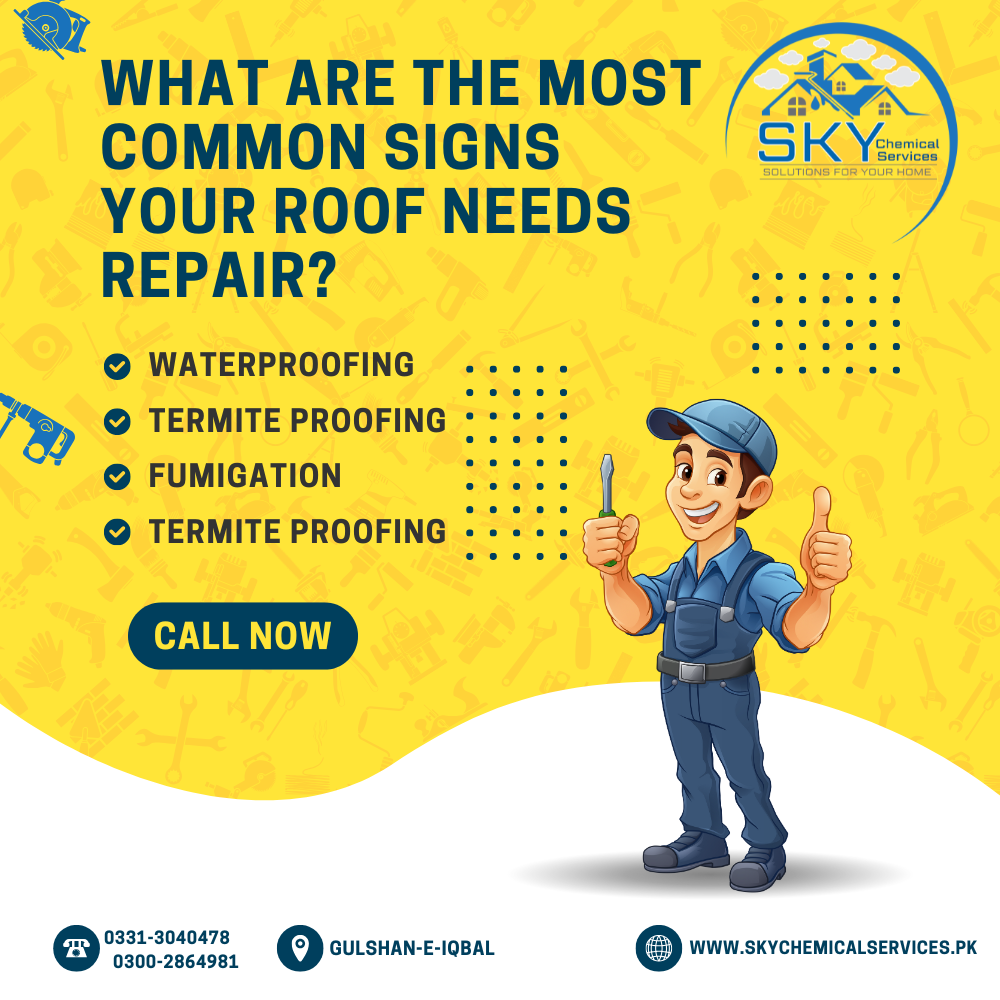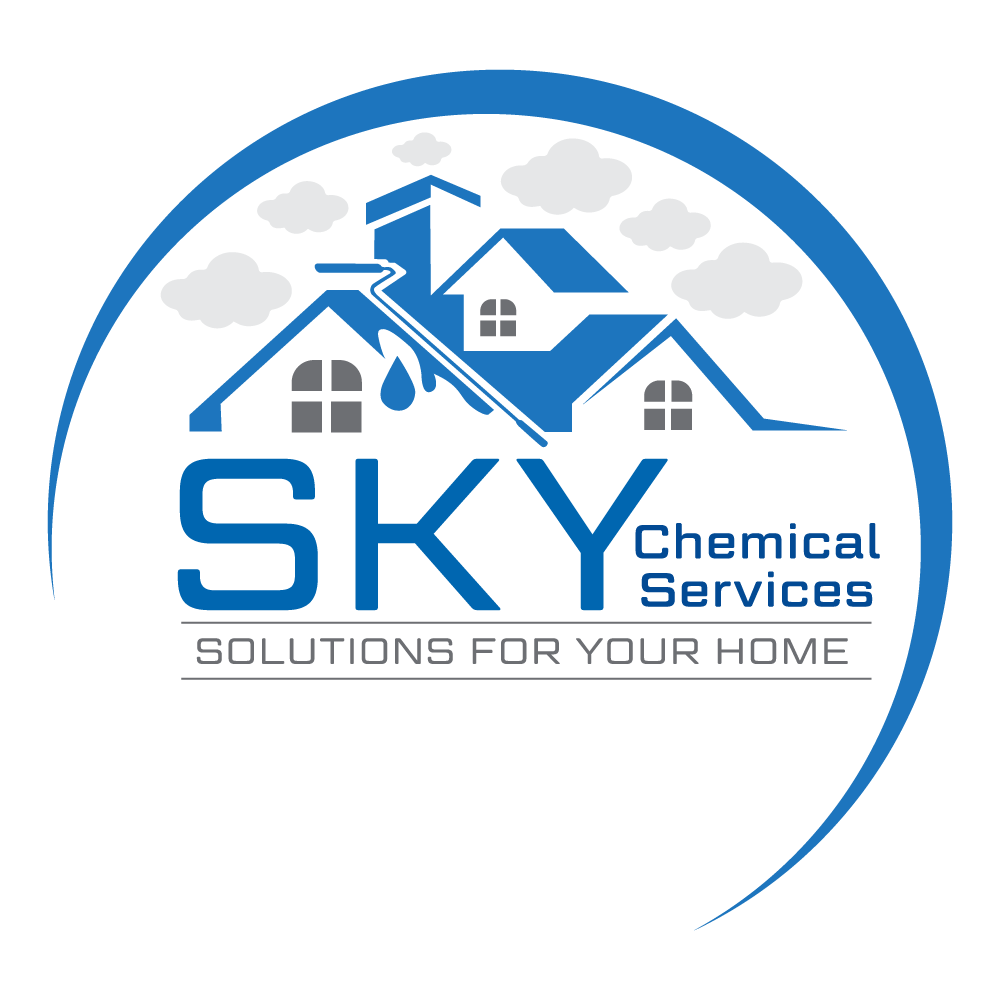Your roof is one of the most important parts of your home, but it’s often overlooked until a problem arises. Catching roof damage early can save you a lot of time, stress, and money. But how do you know when it’s time for a roof repair? Here are some of the most common signs that your roof needs attention.
1. Leaks or Water Damage
One of the most obvious and concerning signs that your roof is in need of repair is when you start noticing leaks inside your home. Water stains on the ceiling, damp or discolored walls, peeling paint, or even puddles forming in the attic are clear indicators that water is seeping through your roof and making its way into your living space. These leaks may start small and seem insignificant at first, but even minor leaks should be addressed immediately, as they have the potential to escalate into much bigger and more costly problems over time.
If left untreated, water intrusion can lead to mold and mildew growth, which can negatively impact indoor air quality and pose health risks to you and your family. Additionally, prolonged exposure to moisture can weaken the structural integrity of your home, causing wood rot, compromised support beams, and even ceiling collapse in severe cases. Insulation can also become saturated, reducing its effectiveness and leading to increased energy costs as your heating and cooling system struggles to maintain indoor temperatures.
To prevent these issues, it’s essential to act quickly at the first sign of a leak. Inspect the affected areas, identify the source of the water intrusion, and determine whether it’s a simple fix, such as replacing a damaged shingle, or if a professional roofing contractor is needed for a more extensive repair. Regular roof maintenance and prompt repairs can help extend the lifespan of your roof and protect your home from costly water damage in the long run.
2. Missing or Damaged Shingles
Shingles act as the first line of defense against the elements, protecting your home from rain, wind, snow, and harsh sunlight. When they become damaged or go missing, it leaves your roof vulnerable to leaks, water damage, and even structural deterioration over time. It’s essential to regularly inspect your roof for any signs of wear and tear to catch potential problems early. Look for cracked, curling, or buckling shingles, as well as any patches of your roof that appear to be missing shingles entirely. You might also notice granules from asphalt shingles accumulating in your gutters, which is another sign that your roof is deteriorating and may need repairs or replacement.

These issues often occur after storms, heavy winds, or severe weather conditions, which can loosen or tear shingles away. However, damage can also be a result of normal aging, as shingles naturally degrade due to prolonged exposure to the sun’s UV rays, fluctuating temperatures, and general wear over the years. If left unaddressed, missing or damaged shingles can allow water to seep beneath the roofing layers, leading to mold growth, wood rot, and costly interior damage.
To maintain the integrity of your roof, be proactive in addressing shingle problems as soon as they arise. In some cases, replacing a few damaged shingles can be a simple fix. However, if a large portion of your roof is affected or if your shingles are nearing the end of their lifespan, it may be best to consult a professional roofing contractor for a thorough inspection and necessary repairs. Taking action early can help extend the life of your roof and prevent more extensive, expensive damage in the future.
3. Granules in the Gutters
If you have an asphalt shingle roof, granules are the tiny, sand-like particles that coat the surface of each shingle. They help protect your roof from the sun’s UV rays. Over time, as your roof ages, shingles begin to shed these granules. If you notice an excess amount of granules in your gutters or downspouts, it could be a sign that your roof is deteriorating and may need repair.
Read More
Why does A Warehouse Require Roof Water and Heat Proofing?
How to Test for Roof Leak Detection?
4. Sagging Roof Deck
A sagging roof deck is a serious sign that your roof needs immediate attention. This can happen when the underlying structure becomes weak due to water damage or excessive weight. A sagging roof isn’t just a cosmetic issue—it can be a structural one that may lead to a roof collapse if left unaddressed. If you notice any areas of your roof that look uneven or dipping, contact a professional immediately.

5. Daylight Through Roof Boards
If you can see sunlight streaming through the roof boards in your attic, that’s a red flag. This means that there are gaps or holes in your roof, and where light can enter, so can water and pests. Regularly check your attic for any signs of daylight to catch these issues early.
6. Higher Energy Bills
A sudden spike in your energy bills could also be a sign that your roof isn’t performing as it should. If your roof’s insulation is damaged or worn out, it could allow heat to escape in the winter or cool air to leak out in the summer, causing your HVAC system to work overtime. If you notice higher heating or cooling bills, it might be worth checking your roof for any damage or wear.
7. Moss, Mold, or Algae Growth
While moss or algae growth on your roof may seem like a minor aesthetic issue, it can signal deeper problems. Moss holds moisture against your roof, which can cause shingles to deteriorate and lead to leaks. Mold can also be a sign that water is trapped in your roof, which could indicate poor ventilation or a leak. Regular cleaning can help prevent these issues, but persistent growth may indicate it’s time for repairs.
8. Age of the Roof
If your roof is approaching the end of its expected lifespan, it’s a good idea to keep a close eye on it. Most roofs last between 20 and 30 years, depending on the material. Even if there are no visible issues, an older roof may be more susceptible to problems, and preemptive repairs could save you from more significant damage down the road.
What to Do if You Notice These Signs
If you’ve noticed any of these common signs, it’s important to act quickly to prevent further complications. Even minor roof issues, such as a small leak or a few missing shingles, can escalate into more serious damage if left unattended for too long. Ignoring these problems may lead to costly repairs, structural issues, or even water damage inside your home. In some cases, you may be able to fix minor problems yourself, like replacing a missing shingle, sealing small leaks, or clearing out clogged gutters to ensure proper water drainage. However, for more significant issues, such as a sagging roof, widespread shingle damage, persistent leaks, or signs of rot and mold, it’s best to call in a professional roofing contractor. An experienced roofer can assess the extent of the damage, provide expert recommendations, and ensure that necessary repairs or replacements are done correctly and safely. Taking swift action can help extend the lifespan of your roof and protect your home from costly damage in the long run.
Why Regular Roof Inspections Matter
Regular roof inspections, at least once a year or after severe weather, can help you catch potential issues early. Professionals can spot problems that aren’t always visible from the ground and provide you with options for repair before they become expensive and extensive.
Taking care of your roof is essential to protecting your home from the elements. By staying alert to these common signs and addressing problems quickly, you can extend the life of your roof and avoid costly repairs or replacements down the line. Contact For Better Services Sky Chemical Services
Frequently Ask Questions
- Q. What is the most common roof repair?
A. The most common roof repair involves fixing or replacing damaged shingles, often due to weather exposure or wear and tear. It helps maintain the roof’s protective layer and prevents leaks. - Q. How much does it cost to fix a roof top?
A. Roof repair costs vary based on the extent of damage, but the average repair can range from $300 to $1,500. Major repairs or replacements may cost significantly more. - Q. How to repair a damaged roof?
A. To repair a damaged roof, inspect the area for missing or broken shingles, remove the damaged pieces, and replace them with new ones. For leaks, patch the underlayment and seal any gaps. - Q. What is the meaning of roof repair?
A. Roof repair refers to fixing damage or wear on a roof to restore its functionality and protect the structure from water infiltration, leaks, and further damage. - Q. How to fix roof leaks?
A. To fix a roof leak, locate the source, remove any damaged shingles, apply a waterproof sealant, and replace the shingles. Ensure flashing is secure around vents and chimneys to prevent further leaks. - Q. Which roof type is best?
A. The best roof type depends on the climate and home design, but asphalt shingles are popular for affordability, while metal and slate offer greater durability and longevity.
